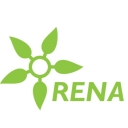Workshop on linkages between the Water Framework Directive (WFD) and Strategic Environmental Assessment Directive (SEAD) and Environmental Impact Assessment Directive (EIAD)
Date: 22-24.09.2015
Place: Prague, Czech Republic
Organizer: ECRAN Secretariat with EC TAIEX Unit
Water Framework Directive has strong linkages to the SEA and EIA Directives. Their integration offers
the opportunity to adopt a new approach to optimize the mutual synergies and minimize conflicts
between them. As mentioned above, the WFD main objectives are to attain good ecological water
quality status and to prevent any deterioration in the status of waters. The EIA and SEA Directives set
out categories of ‘objects’ that must be subject to mandatory assessment: the EIA Directive in Article
4(1) and Annex I; the SEA directive in Article 3(2).
The WFD, SEA and EIA Directives refer to measures that ‘prevent or reduce’ impacts/adverse effects
and set out the general obligations of the EU Member States to ‘incorporate’/‘integrate’/ ‘apply’ the
relevant requirements/rules of the directives into: ‘their territory’ (WFD, Art. 3[5]), and into ‘existing
procedures’ (EIA, Art. 2[2] & SEA, Art. 4[2]). The key links between the WFD and the EIAD,
respectively the SEAD relate to:
- the assessment approach required by the WFD, for those situations when likely significant environmental impacts are identified and then assessed according to the EIAD/SEAD;
- the objectives of WFD and SEA/EIA Directives to integrate the environment into decision- making process.
Therefore, WFD requires likely significant environmental impacts to be identified, assessed and mitigated. The WFD assessment should then be carried out and form part of the SEA or EIA.
The Czech Republic has been selected for the study visit due to its long experience with SEA and EIA application as well as since the SEA has been recently applied for a number of the River Basin Management Plans. Therefore the governmental institutions involved in the SEA/EIA and river basin planning, respectively, gained an extensive practical experience to be shared with the ECRAN beneficiary countries.
Wider Objective
To present the Czech practice regarding the application of SEA and EIA related to the assessment under the WFD and provide hands-on experience for the study visit participants.
Specific Objectives
- To clarify legal linkages between the WFD, especially the River Basin Management Plan (RBMP) and the Program of Measures (PoM) (Article 11), and the assessment under the SEA/EIA Directive;
- To highlight similarities and overlaps (extent, nature) between the WFD, and SEA/EIA Directive
- To share experience of the Czech relevant institutions regarding the water management planning and SEA/EIA application ;
- Based on the Czech experience as well as considering case examples from the other EU countries to formulate possible solutions to strengthen linkages between the WFD and practical application of SEA/EIA.
Expected Results of the meeting
The expected results are:
- Increased understanding of the linkages between river basin management planning and SEA/EIA application;
- A short ‘guide’ highlighting main aspects on efficient application of SEA/EIA and its linkages to the WFD to be used in ECRAN beneficiary countries ;
- Contacts established between the study visit participants and the relevant governmental institutions to be further utilized.

